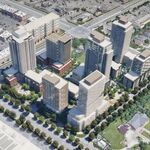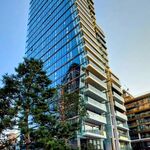I actually would be in favour of a $0.25 or even $0.50 surcharge for commuters to ride a new P3 Subway line...while it could be implemented on Sheppard, i think it is far more realistic on...the DRL
Clearly the DRL will be an alternate to an existing rapid transit route...So Lets get a P3 to build it and let it accept the extra $0.25/$0.50 surcharge per rider to make its return...if there are riders along the route that absolutely refuse the extra surcharge, there is an existing streetcar and frequent bus service available...or there is the usual Yonge-Bloor transfer...
Now, there should be a limit to how many years this extra surcharge could be collected...i would say 10 years, 15 maximum.
I'm sure that if a tender was put forward to build and operate a profitable subway line AND collect a surcharge for it, there would be a lineup of bidders...at least its something worth studying
You obviously haven't done the basic math on this one.
The DRL, in my non-expert opinion, is a much needed piece of transit infrastructure. However given it will cost billions and billions and isn't high on anyone's radar at the moment, is unlikely to get built anytime soon, including under this fanciful P3 plan.
Due to the significant amount of subterranean infrastructure already existing under downtown, it is going to be a huge engineering feat (costing lots of money) to go through the area people actually want to go (so that means some routing to the south along rail lines through an already over-capacity Union is a non-starter).
Say we build just the eastern half, from ~Spadina over and up to Danforth (Pape, Greenwood, whatever). Let's me super-conservative and say $3 billion coming from the magic of private money.
Now we've got this proposal to tack a surcharge to riding the line. Has there been any consideration for how this will be effectively managed? For interchanges with existing subway stations or surface routes, do you put in an internal barrier to collect this additional charge?
Most existing subway ridership comes from surface feeder routes where riders are already in the fare-paid area so you can just flow them down the stair to the platform. Now we're going to funnel them through turnstiles, collector booths, something where we are going to ding them for $0.25 or $0.50. Cash only? What about if they don't have change? A transfer or metropass isn't good enough?
But that's minor stuff compared to the total money we're talking about.
Current total TTC system ridership is about 450 million/year. Let's be really generous and put 200 million of that choosing to take this premium DRL. Even at $0.50/ride that's $100 million/year. For the maximum of 15 years, we're barely hitting half of the current severely underestimated cost of building the line.
Where's the private profit incentive with that kind of return? How do you determine that the line is actually 'profitable' when most of the ridership is being delivered by transit they already paid a fare for (subway or surface routes)?
Maybe there is some fantastic pool of private money yearning to be spent on building subway infrastructure for Toronto, but to go on with simplistic statements about expecting there to be a lineup of eager bidders is just plain silly. You need to show the numbers that prove otherwise and not just repeat cliches about the wonders of private financing.

















